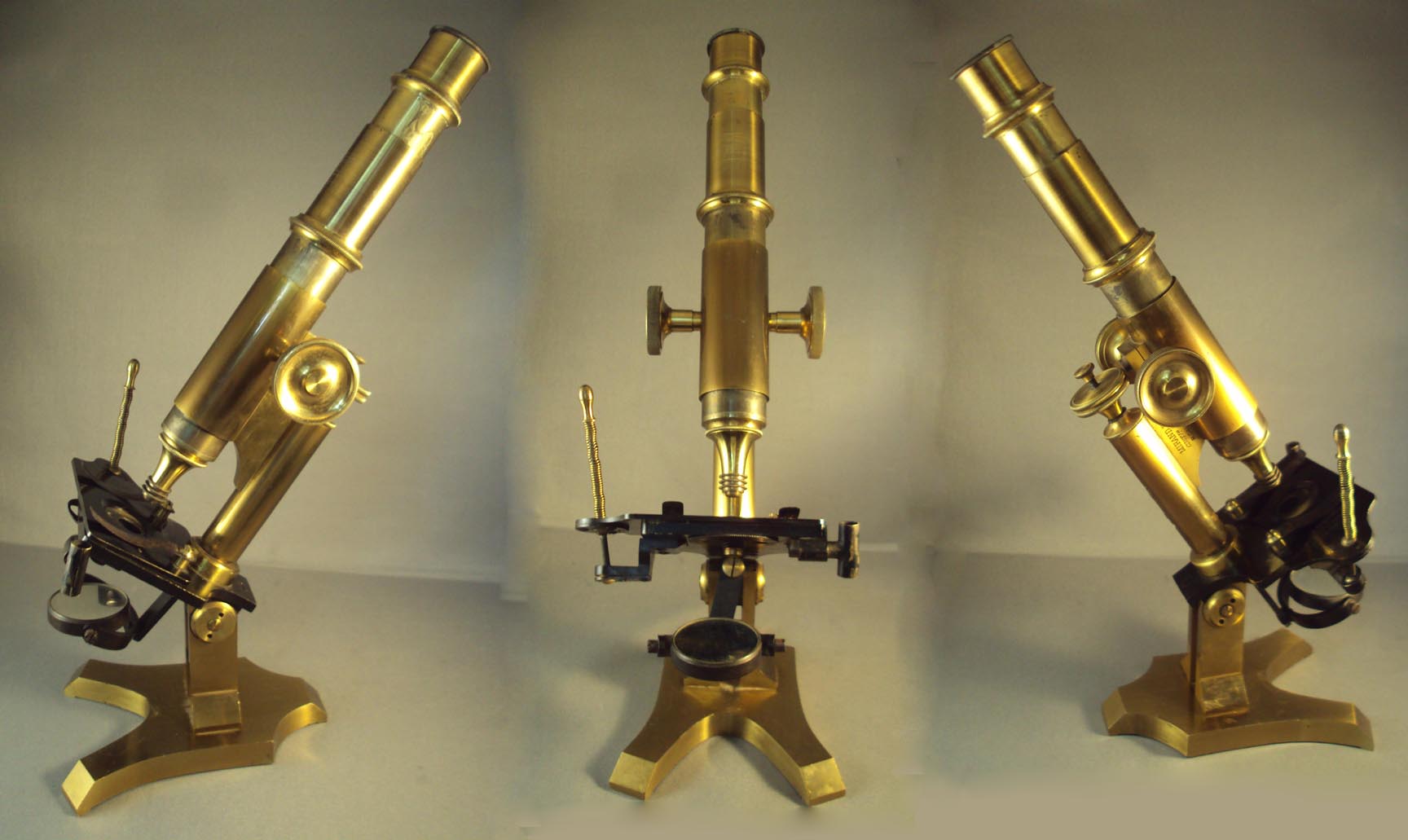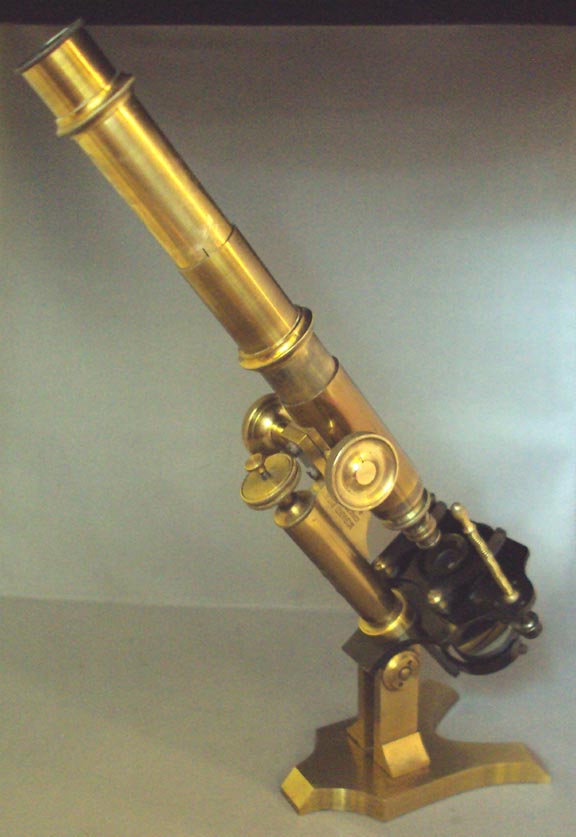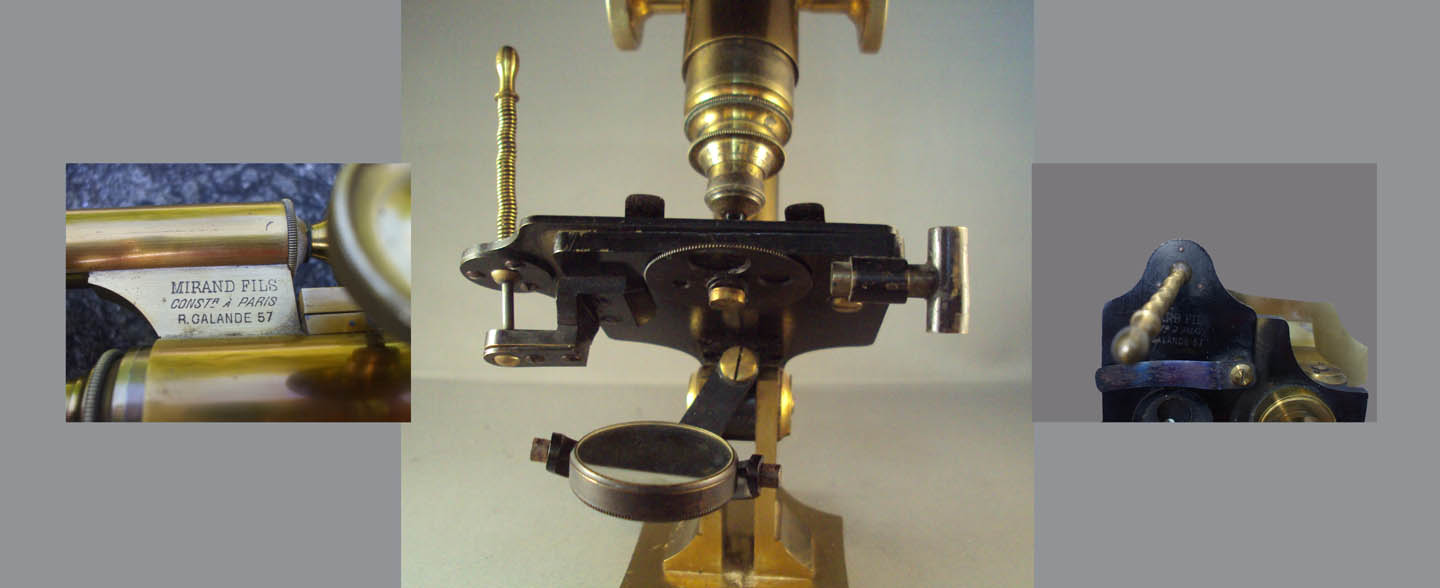MIRAND FILS, CONSTR Á PARIS, R GALANDE 57
| DESCRIPTION | HISTORY |

 The instrument has the name and address engraved both on the arm and the stage. Coarse focus is by rack and pinion,
fine focus by fine screw on the sprung limb on the continental pattern. There is a continental horseshoe foot.
There is a drawtube that can be extended. The mirror is convex and can swing under the stage, but not above it.
The stage has a lever movement, but this is the simpler French variety with the left side of the stage supported by a
slotted screw (slotted left to right). Although the lever can move the stage left or right, forward and backward motion
is only possible in an arc. The screw holds the stage down on its support on the left side, but on the right this is
accomplished by a spring around the lever. There is a wheel of stops under the stage to adjust lighting.
The eyepiece, with a number '6' appears to be original. The microscope functions fairly well for an instrument over
100 years old, and the lever stage actually is quite effective.
There is an unusual accessory holder in the shape of a 'T' attached to the left front of the stage; it could easily have held a bullseye condenser.
The instrument has the name and address engraved both on the arm and the stage. Coarse focus is by rack and pinion,
fine focus by fine screw on the sprung limb on the continental pattern. There is a continental horseshoe foot.
There is a drawtube that can be extended. The mirror is convex and can swing under the stage, but not above it.
The stage has a lever movement, but this is the simpler French variety with the left side of the stage supported by a
slotted screw (slotted left to right). Although the lever can move the stage left or right, forward and backward motion
is only possible in an arc. The screw holds the stage down on its support on the left side, but on the right this is
accomplished by a spring around the lever. There is a wheel of stops under the stage to adjust lighting.
The eyepiece, with a number '6' appears to be original. The microscope functions fairly well for an instrument over
100 years old, and the lever stage actually is quite effective.
There is an unusual accessory holder in the shape of a 'T' attached to the left front of the stage; it could easily have held a bullseye condenser.
